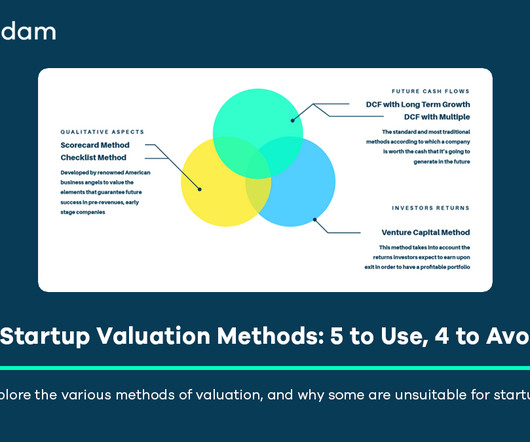9 Startup Valuation Methods: 5 to Use, 4 to Avoid
Equidam
APRIL 26, 2025
Valuation as a Process, Not Just a Number A common misconception is that startup valuation aims to pinpoint a single, definitive “right” number representing the company’s price. Due to the typically non-tradable nature of startup debt, We assume the Weighted Average Cost of Capital (WACC) is equal to the cost of equity.













Let's personalize your content